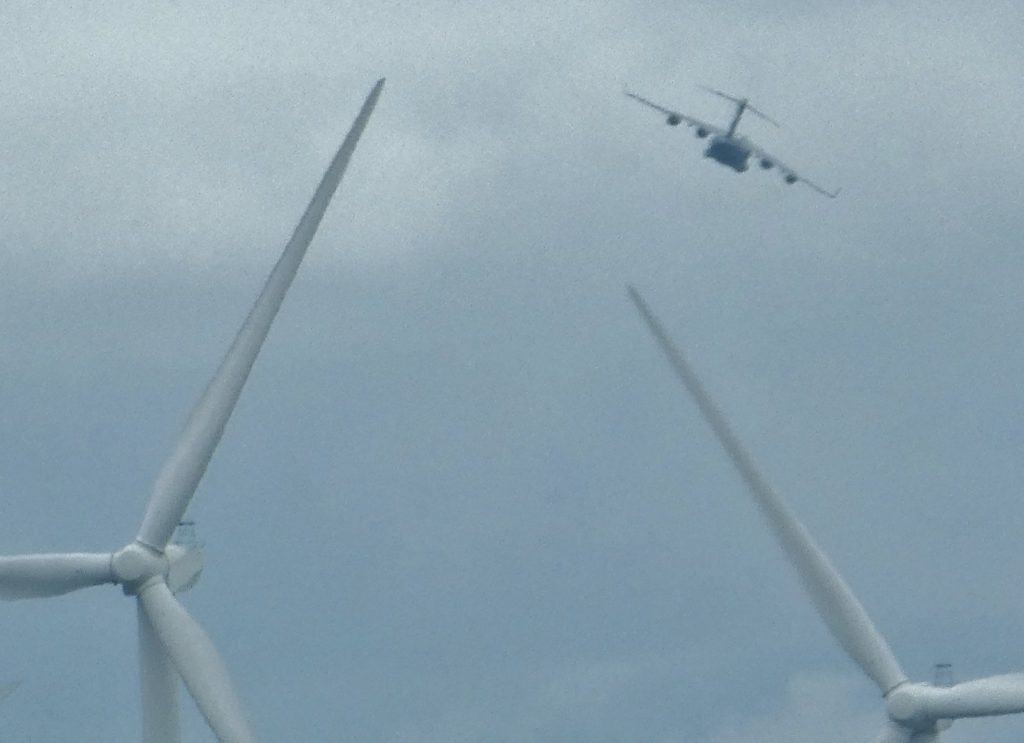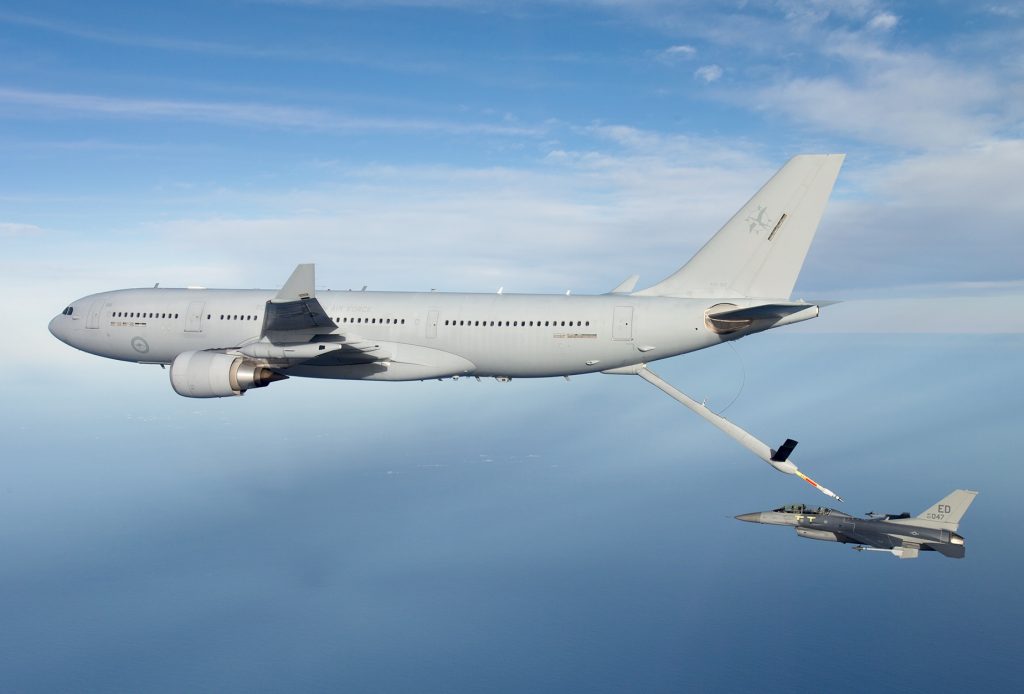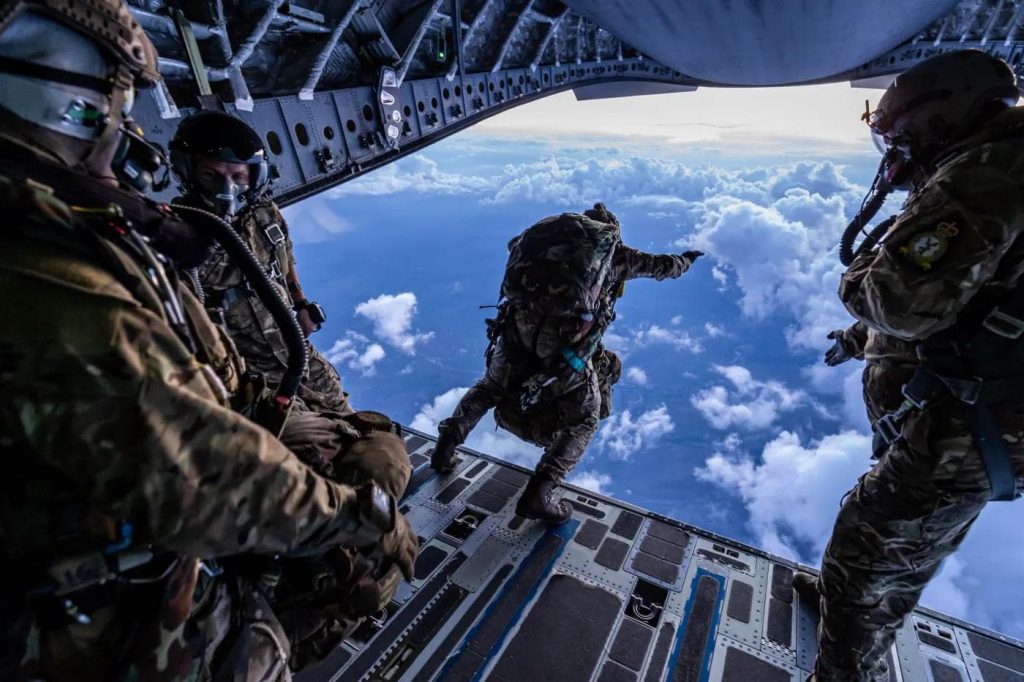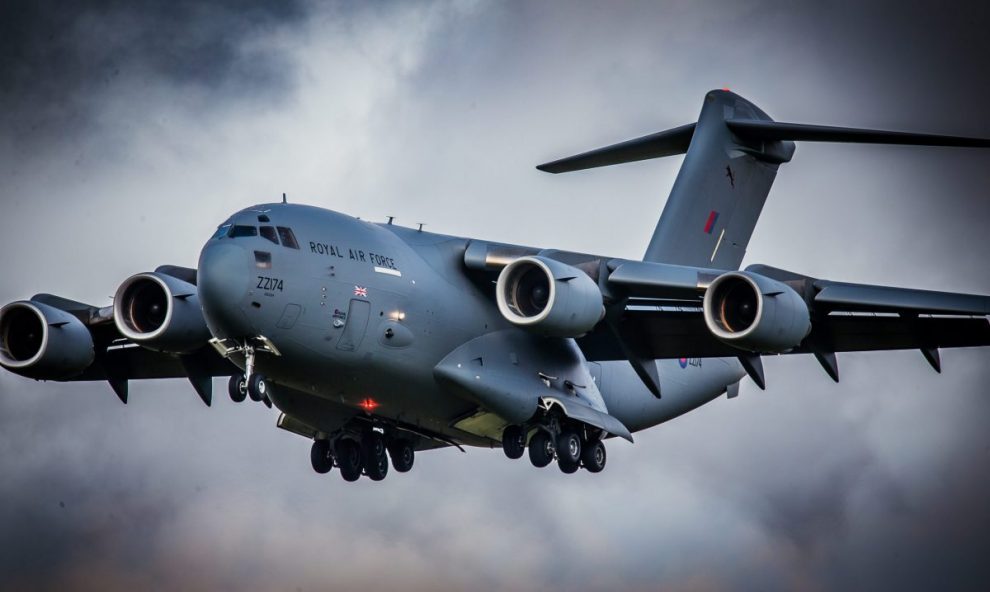THE C17-GLOBEMASTER aircraft was seen over the county yesterday with many reporting it was flying very low. (May 24)
The huge plane had made the journey from the RAF Brize Norton, in Oxfordshire, and was roaring at low altitude across the county as part of a training exercise – but just off the coast of Pembrokeshire another plane ran into trouble.

The military issued an emergency after an Airbus Voyager KC3 was squawking the emergency call 7700 after refuelling over AARA 12 – an area of sea to the south of Pembrokeshire.
The second aircraft, which was travelling at an altitude of 2250 feet and a speed of 139kmh, has now returned to Brize Norton.
Operating using callsign TARTN19, the aircraft is using model code A332.
A emergency signal 7700 indicates to all air traffic control(ATC) in the area that the aircraft is in an emergency situation.
However, it is up to the crew of the relevant aircraft to inform ATC what the emergency situation is.

RAF Brize Norton took to Facebook to say: “Our C17-Globemaster aircraft will be operating whilst engaged in essential training.
Regards the second plane, the Airbus Voyager KC3 is a large multi role refuelling tanker transport based on the civilian Airbus A330.
The Voyager is the RAF’s only air-to-air refuelling (AAR) tanker and also operates as strategic air transport.
Fuel is kept in the aircraft’s standard wing and fuselage tanks this leaves room for 291 crew and freight in the hold.
Voyager is also able to act as a passenger aircraft in much the same way as a civilian airliner.
The flights came as personnel from across the Air Mobility Force have been supporting Exercise Swift Response in North Macedonia – the UK’s contribution to the broader NATO deterrence Exercise, Defender Europe.
Led by the C-130J Hercules force, personnel from Nos. 47 Squadron and XXIV Squadron conducted in-depth planning alongside C-17 crews from No. 99 Squadron, culminating in the first ever long-range, O2 high-altitude parachute insertion by a UK C-17. Utilising techniques developed by No. 206 Squadron Test & Evaluation crews for all Air Mobility platforms, this enabled 16 Air Assault Brigade Pathfinders to initiate the exercise – all on time, on target.

Remaining in country, the C-130J has been conducting multiple low level parachuting drops, concentrating forces from the Parachute Regiment into the exercise area. Finally, they have followed up with airborne delivery of heavy equipment supplies, utilising the Container Delivery System method of air despatch. This saw personnel from 47 Air Despatch Squadron, Royal Logistic Corps working alongside their US Army counterparts to rig the containers for despatch – including quad bikes, water and rations to support the troops on the ground.
A hugely joint exercise, it has been enabled by personnel from Airborne Delivery Wing Air Operations, Survival Equipment Section, UK Mobile Air Movements Squadron, the Mobile Meteorological Unit and 16 Air Assault’s Air Cell – all working round the clock to ensure the crews can prosecute their drop zone objectives and that the troops and kit land safely for the work to begin.
It should be especially noted, that despite the C-130J scheduled to go out of RAF service next year, it is still playing a decisive part in operational exercises such as these – and will continue to do so. Ex Swift Response 22 has been conducted alongside the Hercules’ continuous operational and national standby commitments, an Ex Red Flag-Alaska deployment and UK maritime aerial delivery trials – a testament to the engineers that maintain this incredible aircraft, the planners that organise it all and the crews that fly it with such passion.
















